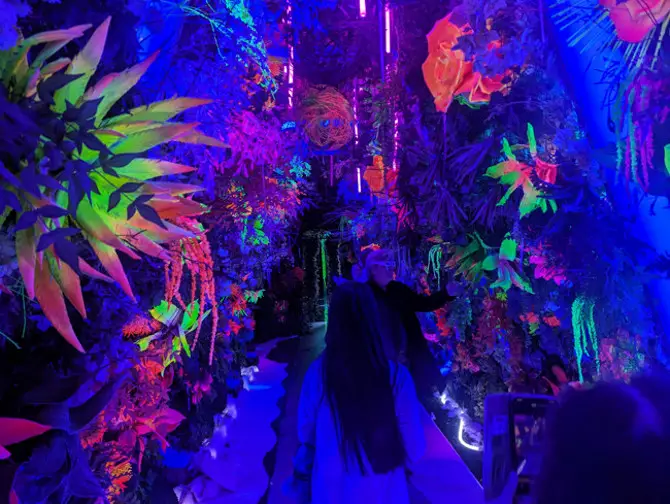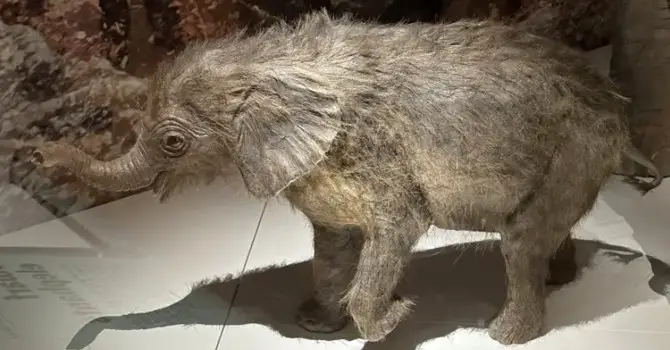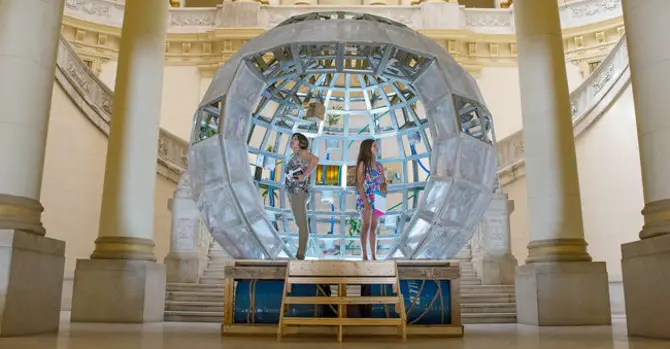Walking into Art in a Time of Chaos at the new China Institute, you’re greeted by a group of little green men. Made of glazed porcelain, each individually carved, the 10 diminutive figures (the tallest is barely eight inches) represent musicians and a few listeners. So vivid are they, it’s hard to believe the boys have been playing for a long time—since the year 280 or so.
The recently relocated China Institute has opened its spanking new gallery with a display of ancient artifacts. Art in a Time of Chaos: Masterworks from Six Dynasties China exhibits 100-plus sculptures, ceramics, paintings and calligraphic works dating from the 3rd to 6th centuries. Many of the pieces are, literally, buried treasures, excavated from the tombs and crypts of nobles and high-ranking officials. They’re on view for the first time in the U.S.

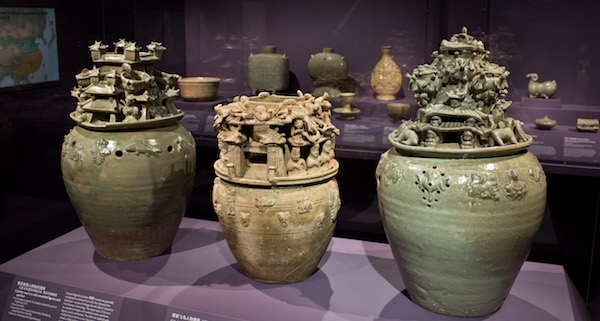
Photos: Perry Hu
The Six Dynasties refers to an era when southern China was ruled successively by a half-dozen families and northern China by five different clans. Although a pretty turbulent time politically and socially — as the name suggests — it was also a rich period for literature, arts and crafts. “Great chaos led to extraordinary cultural and intellectual achievements by artists who defined the soul of Chinese art for generations,” says China Institute Director Willow Weilan Hai, chief curator of the exhibition.
The show spreads out over five rooms, their walls painted in soothing tones of purple, brunt orange, blue and green – providing a good backdrop for the neutral or subtly colored objects (most are a greenish gray, called celadon, a name that came to mean this style of porcelain itself). The first rooms are devoted to ceramics and earthenware, ranging from massive (a two-piece, three-foot high lotus-themed vessel) to miniscule (a one-inch water bottle in the form of a toad). The production of porcelain took off in a major way during this period, Weilan Hai notes, “so people could really start using it in their everyday lives.” They used it in lamps, fruit trays and spittoons; in large jars, called soul urns, carved with a village-worth of figurines on top, or in ewers and candle-holders shaped whimsically like a tiger or chicken or curly-horned ram.
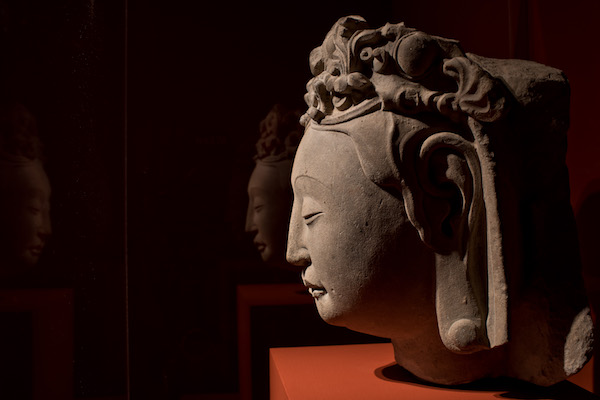
There are a variety of small sculptures too, created to be interred within a tomb, to ensure a comfortable afterlife for the occupant. These ranged from soldiers (more common in the more warlike north) to servants and entertainers (more typical of the south). Unglazed, they were painted in lifelike colors: one attendant’s robe remains a rosy pink, even though it dates to 570. The figurines are rich in lifelike details, too: Warhorses are fully equipped with bridles, saddles, and saddle blankets; smiling court ladies wear the latest in 4th-century hairstyles and dress. While some figures are stiff and stylized, others are remarkably fluid: You could swear that one seated dog is about to leap up to greet his master.
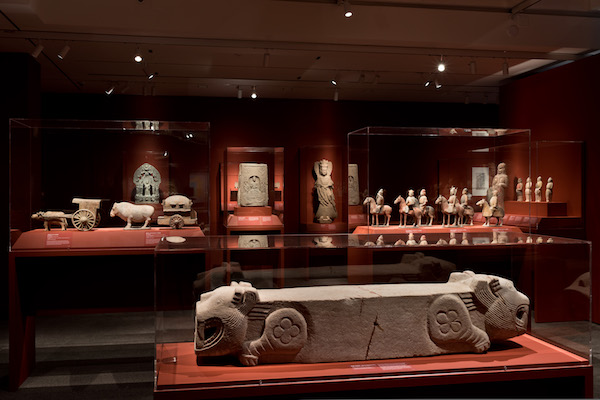
The Six Dynasties also saw the advent of foreign trade and foreign ideas: Buddhism, from India, took hold in China at this time. One room in the exhibit features Buddhas and Bodhisattvas. Foreigners — mostly from Persia or East Asia —are depicted in several sculptures, too recognizable by triangular hats and distinctive features.

The remaining rooms offer more esoteric fare. One is devoted to calligraphy — a variety of script styles developed during the period — and the other to tomb wall paintings and mosaic murals. The exhibits here are mostly rubbings or reproductions, and after the 3-D objects, they fall a little flat. But there is a vivid frieze decorating the sarcophagus of government official. And also an endearing set of flat wood sticks, about the size of paint chips. Brushed with a person’s name, title and village of origin, they worked as business cards, ritually exchanged at meetings and parties.
Art in a Time of Chaos: Masterworks from Six Dynasties China, 3rd to 6th Centuries is on display at China Institute Gallery through March 19, 2017. For more information, visit chinainstitute.org.


